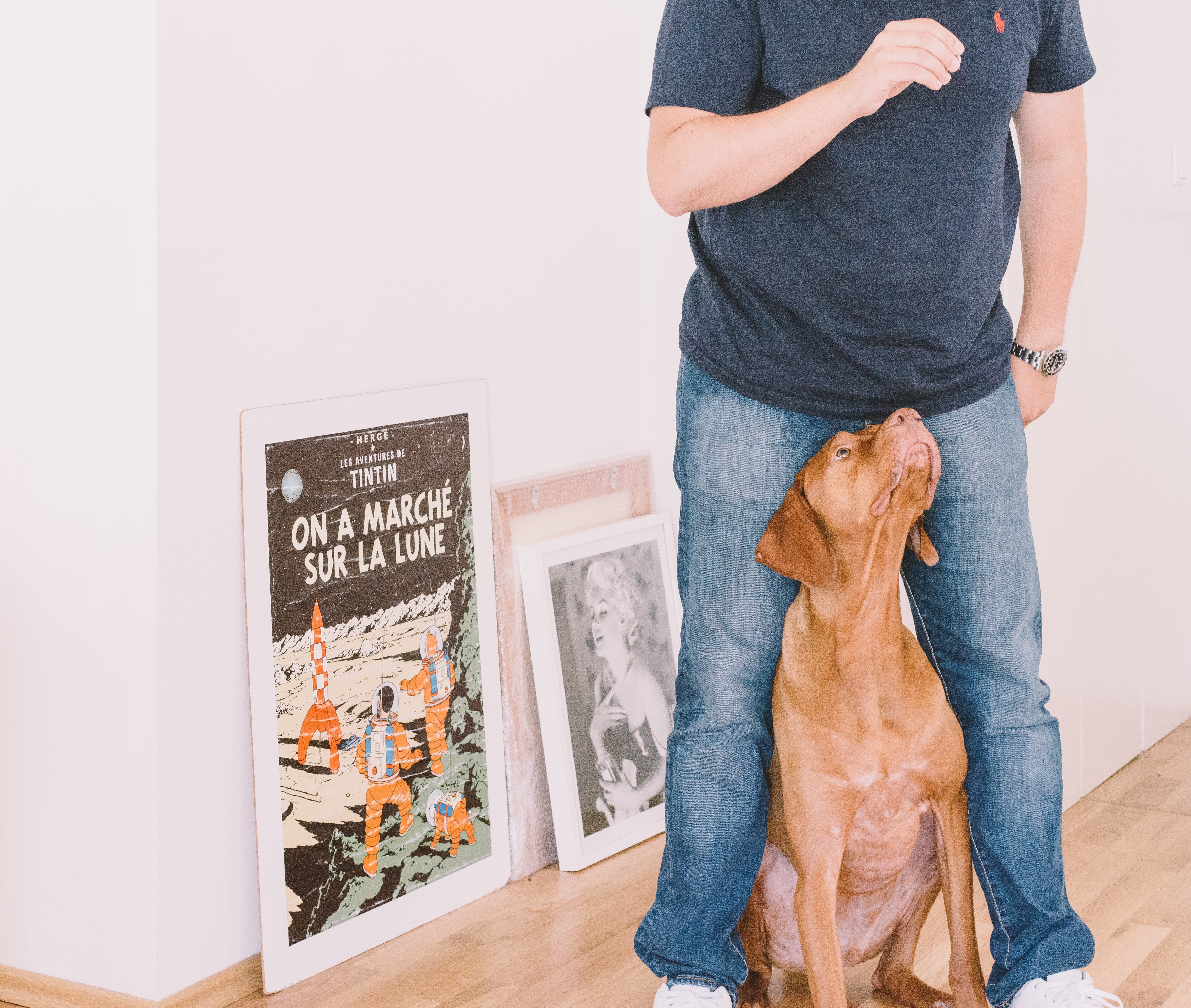In this excerpt from Dr. Megan Maxwell’s pet behavior advice column The Teacher’s Pets, she addresses how to teach a Sit/Stay as a replacement behavior for a dog’s bolting through an open front door.
Last month, a reader wrote in for help addressing his terrier’s bolting behavior. Bolting refers to a dog’s tendency to run through an open door and off into the wild blue yonder, often then refusing to come when called. I talked last month about how to improve a dog’s response to the Come command and I focus this month on preventing that bolting in the first place.
It’s useful for many reasons to teach your dog to Sit and Stay while the front door opens. In addition to preventing bolting, a reliable Sit/Stay by the front door can be used to prevent crowding, jumping on, or mouthing at visitors when they arrive; to prevent chasing after owners when they leave the house; and to prevent other problems (such as aggression between dogs) that arise from the high activity and arousal levels often associated with arrivals and departures through the front door.
Begin by practicing your dog’s Sit around the house. There are several methods for initially teaching a Sit. I prefer to lure the dog into a Sit position by bringing a treat down to her nose and slowly over her head (toward her tail) so that her behind moves toward the floor as she works to keep her nose on that treat in your hand. As soon as her rear hits the floor, say “Sit”, praise and treat. The command is not yet a command as such – instead, you are initially simply labeling the dog’s behavior for her. You are using the treat as a lure to get the Sit to happen, then pairing the word “Sit” with the behavior of sitting, and then rewarding the behavior with praise and treat.
Over repetitions, your dog will begin to sit more quickly as you bring the treat over her nose, and you should be able to say “Sit” as soon as you notice she is lowering her rear end toward the floor. Praise and treat every time her rear hits the floor. As her performance improves, you can begin to say “Sit” earlier in the sequence and also to keep your luring hand closer to yourself. Your next step is to use your luring hand in the same position to cue the Sit, but keep the treat in your pocket. As soon as she sits, praise her and provide the treat from your pocket with your other hand. In this way, you transition from a treat lure to a hand cue, with the treat now serving as a consequence instead of a part of the cue.
You then begin building the Stay. Start by having her Sit and then hold your hand cue in place for just a moment, say “Stay” and then immediately praise and treat. Over repetitions, begin to pause a few moments longer after you say “Stay” and before you praise and treat. If she stands before you praise and treat, say “Sorry” and turn your back for 10 seconds before returning to cue the Sit and Stay again. Continue to build the duration of your dog’s Stay in 1 or 2 second increments until she can stay for 60 seconds or more.
You also must teach her to Stay as you walk away. Here too, use shaping – that is, rewarding small increments toward your final goal so that she is almost always successful as she learns. Begin by saying “Stay” with an open palm as a hand cue, and take one baby step back, then return to her, praise and treat. Over repetitions, increase the number of steps you take away from her before you return to praise and treat. Practice this all over the house and yard until she will Sit and Stay as you move across a room and even out of sight before returning to praise and treat.
You are now ready to practice by the front door. Be sure you have a tether, gate, or other way to prevent bolting while practicing near a door until your dog is reliable in this context. Have your dog Sit and Stay about 10 feet from your front door, then move toward the door before returning to praise and treat. When she is successful at this stage, begin to introduce cues associated with real visitors or real “open door scenarios”. For example, turn the doorknob or greet a pretend visitor before returning to praise and treat. Go through the motions of the ultimate scenario where you would like your dog to Sit and Stay, but present these stimuli in small bits across practice trials until your dog can Sit and Stay for all of them. At this point, finally, you are ready to practice with real visitors!






